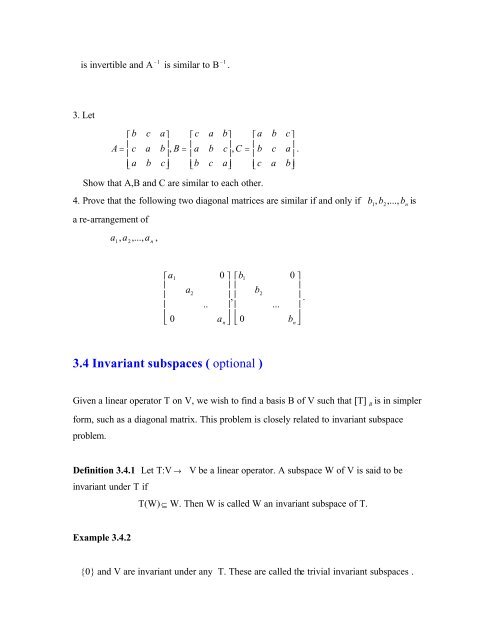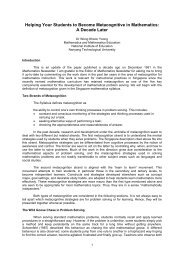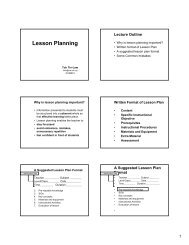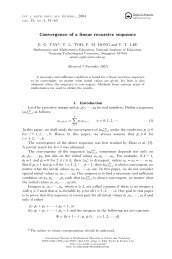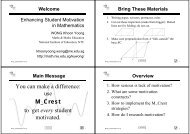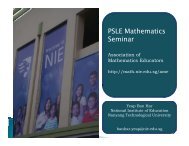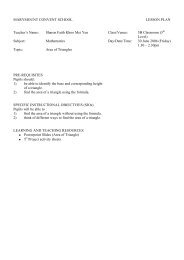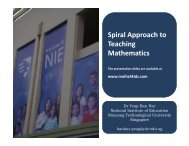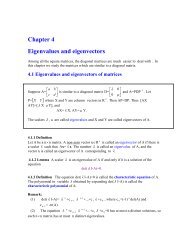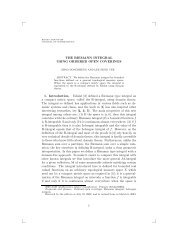Chapter 3 Linear transformations
Chapter 3 Linear transformations
Chapter 3 Linear transformations
You also want an ePaper? Increase the reach of your titles
YUMPU automatically turns print PDFs into web optimized ePapers that Google loves.
is invertible and A −1is similar to B − 1 .3. Let⎡⎢=⎢⎢⎣b⎤⎥⎥⎥⎦⎡⎢=⎢⎢⎣c⎤⎥⎥⎥⎦⎡⎢=⎢⎢⎣A c a b , B a b c , C b c a .acbacbacbaShow that A,B and C are similar to each other.4. Prove that the following two diagonal matrices are similar if and only if b1, b2,...,bnisa re-arrangement ofa ,...,1, a2a n,acbacb⎤⎥⎥⎥⎦a⎡⎢⎢⎢⎢⎣10a2..0ab⎤ ⎡⎥ ⎢⎥,⎢⎥ ⎢⎥ ⎢⎦ ⎣10b...0nb n2⎤⎥⎥⎥⎥⎦.3.4 Invariant subspaces ( optional )Given a linear operator T on V, we wish to find a basis B of V such that [T] Bis in simplerform, such as a diagonal matrix. This problem is closely related to invariant subspaceproblem.Definition 3.4.1 Let T:V → V be a linear operator. A subspace W of V is said to beinvariant under T ifT(W) ⊆ W. Then W is called W an invariant subspace of T.Example 3.4.2{0} and V are invariant under any T. These are called the trivial invariant subspaces .


